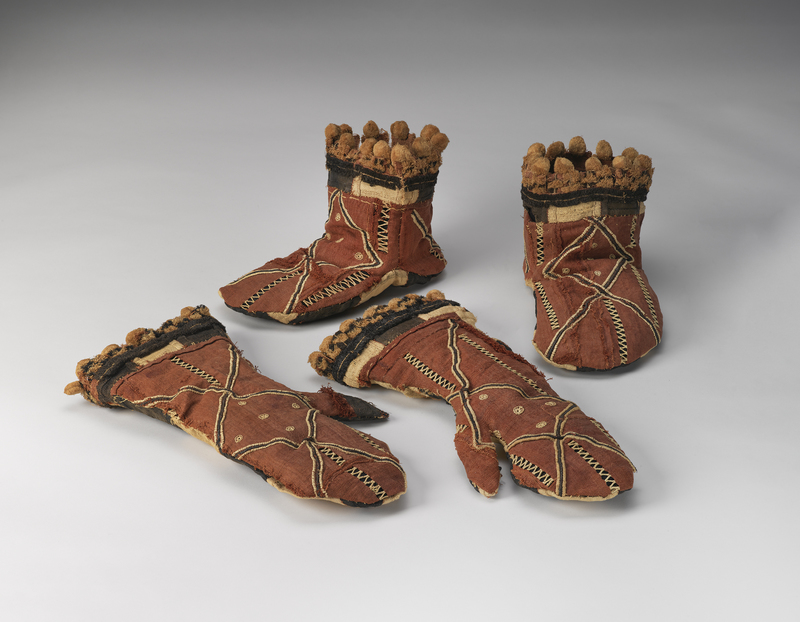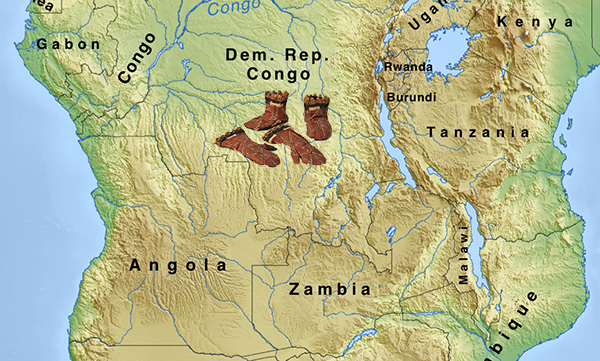Catalogue 40
Mittens and Shoes
Kuba people, Democratic Republic of the Congo
Mid-20th century
Bark cloth, raffia cloth, cowrie shells, and beads; 2002-22-9.1 Shoe: 6 x 6 x I0 1/2 in. (15.2 x 15.2 x 26.7 cm), 2002-22-9.2 Shoe: 7 x 5 1/2 x 10 3/4 in. (17.8 x 14 x 27.3 cm), 2002-22-9.3 Mitten: 2 x 7 1/2 x 15 1/2 in. (5.1 x 19.1 x 39.4 cm) 2002-22-9.4 Mitten: 5.7 x 19.1 x 38.l cm (2 1/4 x 71/2 x 15 in.)
National Museum of African Art, Smithsonian Institution
Gift of Allen Clayton Davis
2002-22-9
For extremely important ceremonies, it is customary for the king, his mother, or his regent to dress in an elaborately layered costume that covers every inch of the body, including even hands and feet. There are also royal masquerade costumes for which the same is true. These mittens and shoes in the Smithsonian National Museum of African Art collection, sewn from bark cloth and raffia cloth, are most likely part of a dancer’s costume. Although they are rich and lively in their graphic patterns—black-and-white checkerboard designs on one side with zigzag accented lattice-like lines for the other, and small pom-pom fringes—their construction is relatively simple and unadorned. The gloves and foot covers worn by the royals are more richly detailed and decorated, often with cowrie shell accents and ivory tips to emulate finger and toenails (Cornet 1982, 232).
With both types of costume the significance of completely covering the skin is part of a symbolic visual transformation. The masquerader as a “performer does not allow any part of his body to show, because he is supposed to have become a spirit” (Cornet 2014, 9). Whereas every opulent layered garment and detailed element of the costume a king wears for the most important occasions instead “conceals the individual man from onlookers, who see an embodiment of kingship itself” (Poynor 2008, 383). Further, “to the Kuba, these ensembles and their attendant ornaments and paraphernalia evoke the idea of sacred kingship, the continuity of dynasty, the individual who fills the position, and links to the original peoples of the area and land itself” (Poynor 2008, 383).
JMP
References
Cornet, Joseph. 1982. Art Royal Kuba. Milan: Grafica Sipiel Milano.
———. 2014. “Kuba Art and Rule.” Art and Life in Africa, Topic Essays. University of Iowa Stanley Museum of Art. https://africa.uima.uiowa.edu/topic-essays/show/35?start=0.
Visona, Monica Blackmun, Robin Poynor, and Herbert M. Cole. 2008. A History of Art in Africa. 2nd ed. Upper Saddle River, NJ: Pearson Prentice Hall.


